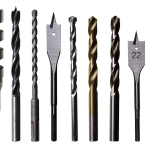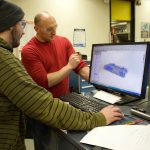Cooling towers are devices used to remove heat from different devices or appliances. They also lower the temperature of water by evaporative cooling. There are several types of cooling towers, and each type is designed for different applications for removing heat. In this article, we will look at the different types of cooling towers and will know how they work.
Types of Cooling towers:
There are two main types of cooling towers:
- air-cooled
- water-cooled
Air-cooled towers use fans to circulate air around the tower, while water-cooled towers use water to remove heat from the air. Both types of cooling towers can be used for different purposes, and each has its own advantages and disadvantages.
Air Cooled Cooling towers:
Air-cooled cooling towers are more common in industrial applications, as they are less expensive to operate than water-cooled towers. They are also less likely to cause water shortages, as they do not require a constant supply of water. However, air towers are less efficient at removing heat than water-cooled towers, and they can produce noise pollution too.
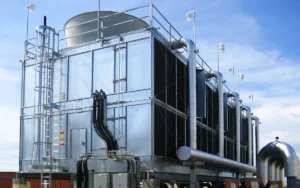
Water Cooled Chiller:
Water-cooled Chiller are more expensive to operate than air-cooled towers, but they are more efficient at removing heat. They also do not produce noise pollution, and they can be used in locations where water shortages are a concern. However, water-cooled towers require a constant supply of water, and they can be less reliable than air-cooled towers.
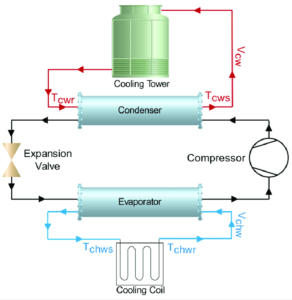
Industrial Cooling Tower:
Industrial cooling towers are used in a variety of industries, including power generation, chemical manufacturing, and food processing. They are designed to remove heat from process water, and they can be either air-cooled or water-cooled. Industrial cooling towers are typically large and complex, and they require regular maintenance.
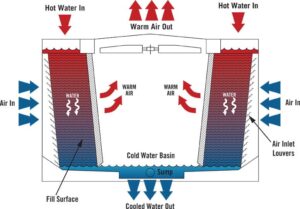
Power Plant Cooling Tower:
Power plant cooling towers are used to remove heat from the water used in power plants. These towers can be either air-cooled or water-cooled, and they are typically large and complex. Power plant cooling towers must be regularly maintained to ensure that they are operating properly.
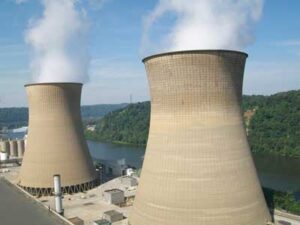
Chemical Plant Cooling Tower:
Chemical plant cooling towers are used to remove heat from the chemicals used in chemical manufacturing. These towers can be either air-cooled or water-cooled, and they are typically large and complex. Chemical plant cooling towers must be regularly maintained to ensure that they are operating properly.
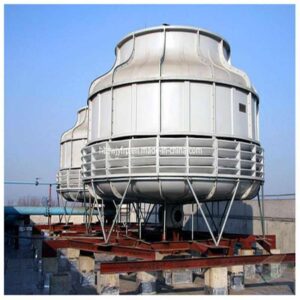
Food Processing Plant Cooling Tower:
Food processing plant cooling towers are used to remove heat from the food products manufactured in food processing plants. These towers can be either air-cooled or water-cooled, and they are typically large and complex. Food processing plant cooling towers must be regularly maintained to ensure that they are operating properly.
Whether you are using an air-cooled or a water-cooled cooling tower, it is important to maintain your cooling tower properly in order to ensure that it continues to operate effectively. You should schedule regular inspections and maintenance appointments with a professional technician, and be sure to follow all instructions for cleaning and care. With proper maintenance, your cooling tower can help keep your appliance running smoothly for years.
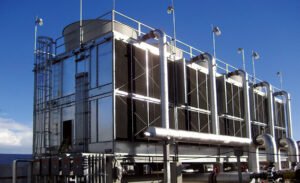
HVAC Cooling Tower: ( Air conditioning Cooling Tower)
HVAC cooling towers are used to maintain the temperature of buildings and other structures. These towers can be either air-cooled or water-cooled, and they are typically large and complex systems. HVAC cooling towers work by circulating water through a system of pipes and fans. The Hot water is cooled by the air as it passes through the tower, and the cooled water is then circulated back into the building or structure in pipes. This process helps to maintain a comfortable temperature inside the building or structure, and it can also help to reduce energy costs by reducing the need for air conditioning cooling. The efficiency and effectiveness of HVAC cooling towers can be improved by regular maintenance, including cleaning and inspection of all components. This is where having a professional technician on hand can be invaluable, as they will be able to identify any potential issues and make the necessary repairs to keep your cooling tower running smoothly. So if you want to get the most out of your HVAC cooling tower, be sure to work with a reputable technician who knows how to properly maintain these complex systems.
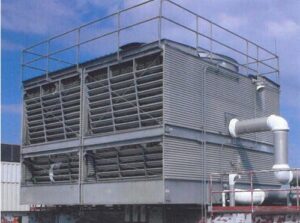
Package type cooling tower:
A package-type cooling tower is a large, complex system that is used to cool a wide range of industrial processes and equipment. This type of cooling tower typically contains water pipes, fans, and other components that work together to remove excess heat from the appliance. Package type cooling towers are usually either air-cooled or water-cooled, and they must be regularly maintained in order to ensure that they are operating properly. When choosing a package-type cooling tower for your industrial process or equipment, it is important to select a reputable manufacturer who offers high-quality products and services.
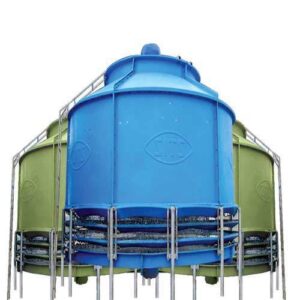
Advantages of a package type cooling tower:
There are several advantages to using a package-type cooling tower in your industrial process or equipment. One key advantage is that these systems can help to reduce energy costs by keeping the temperature of your appliance at optimal levels. Additionally, package-type cooling towers are generally very reliable and durable.
Natural draft cooling towers:
A natural draft cooling towers is a type of cooling system that uses the natural forces of wind and gravity to cool water. This type of cooling tower is typically found in large industrial processes and applications, and it relies on differences in temperature, pressure, and other factors to drive the air flow through the system.
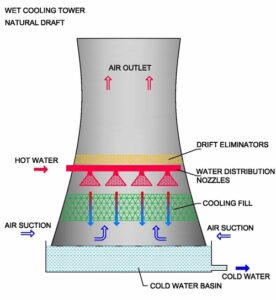
Mechanical Draft Cooling Tower:
A mechanical draft cooling tower is another type of cooling system that uses air flow and pressure to convert hot water into cool water. This type of cooling tower is typically found in large industrial processes and applications, and it relies on fans, pumps, and other components to drive the flow of air through the system. Both natural draft and mechanical draft cooling towers are commonly used in industrial processes and applications, and they are both effective at maintaining a comfortable temperature in the surrounding area. However, choosing between these two types of cooling towers will depend on your specific needs and requirements, as well as factors such as budget and available space. So if you are considering using a cooling tower for your industrial process or equipment, be sure to consult with a professional to determine which type of system would be best suited for your needs.
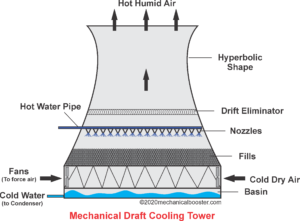
Crossflow Cooling Tower:
A cross-flow cooling tower is a type of cooling system that uses air flow and pressure to cool water. This type of cooling tower is typically found in large industrial processes and applications, and it relies on fans, pumps, and other components to drive the flow of air through the system. Crossflow cooling tower fan are considered to be more efficient than traditional cooling towers and may also require less maintenance in order to keep them running smoothly. However, the specific performance and efficiency of a cross-flow cooling tower fan will depend on many factors, such as the size of your process or equipment, the weather conditions in your area, and other factors. So if you are considering using a cooling tower for your industrial process or equipment, be sure to consult with a professional to determine which type of system would be best suited for your needs.

Induced Draft Cooling Tower:
An induced draft cooling tower is a type of cooling system that uses air flow and pressure to cool water. This type of cooling tower typically relies on mechanical components, such as fans, pumps, and vents, to drive the flow of air through the system. Induced draft cooling towers are often considered to be more efficient than other types of cooling towers, and they are often used in large industrial processes and applications. However, the specific performance of an induced draft cooling tower will depend on many factors, such as the size of your process or equipment, the weather conditions in your area, and other factors. So if you are considering using a cooling tower for your industrial process or equipment, be sure to consult with a professional to determine which type of system would be best suited for your needs.
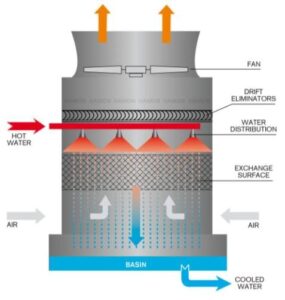
Common Cooling Tower Issue:
One of the most common cooling tower issues is a buildup of debris and sediment within the system. This can result in poor performance, increased energy costs, or even damage to the equipment. In order to prevent these issues from occurring, it is important to regularly clean and maintain your cooling tower according to the manufacturer’s instructions. This may involve removing and cleaning the components of the tower on a regular basis, and it is also important to have a professional technician inspect the system regularly for any potential issues. If you do not properly maintain your cooling tower, it could lead to a decrease in efficiency or an increased risk of damage to the equipment. So be sure to follow all instructions carefully and work with a professional technician to keep your cooling tower functioning properly.



